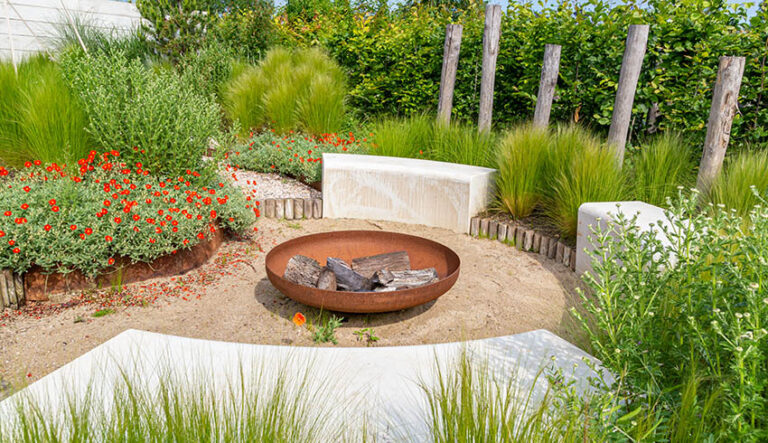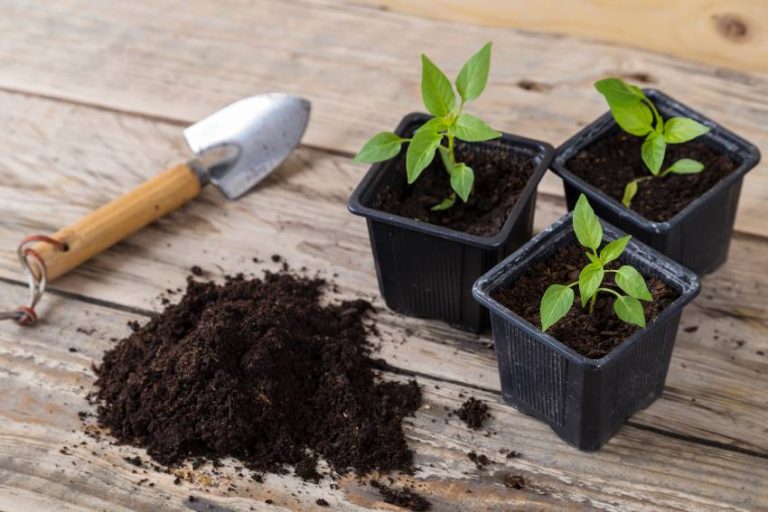Artificial Turf For Dogs Pros And Cons
In this guide we share the artificial turf for dogs pros and cons including cost, tips on installation, how to clean, and best artificial turf material to use.
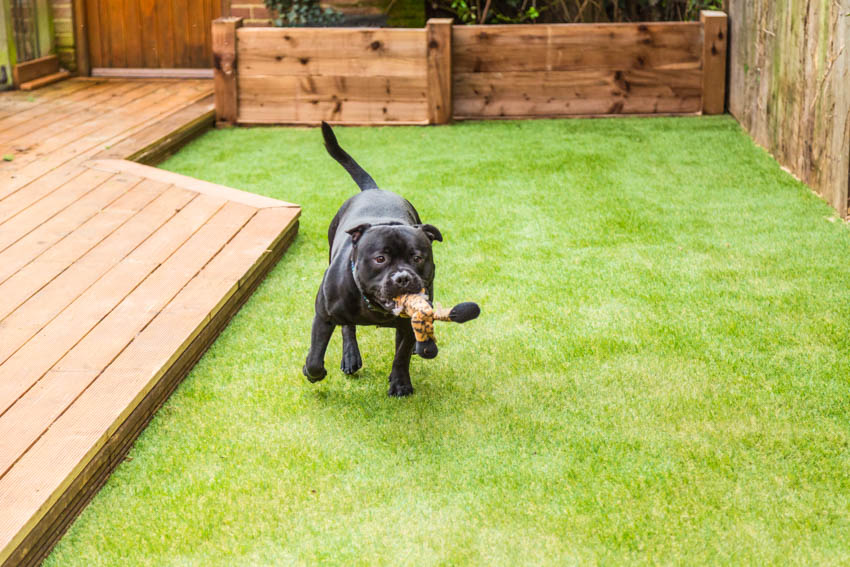
Having pets can be a huge factor as they can be the primary users of a yard space. The constant upkeep of a natural yard can be a huge burden, especially if you are renting a property or are not constantly occupying the space.
Additionally, considering the amount of space you to cover can help determine whether artificial turf is beneficial to your particular situation.
Pros Of Artificial Grass For dogs

Cleanliness: Artificial turf helps keep pets clean since there are not any types of dirt or mud that the dogs can run around and jump in. This can also contribute to the elimination of a digging habit since the turf will not break to show dirt like standard grass.
Maintenance: Artificial turf is extremely easier to maintain than learning how to fix a muddy yard. In this way, your dog can enjoy the backyard whenever they want without you having to mow or weed on a weekly basis.
Appearance: When a dog does his business it will not discolor the turf at all. The turf will look the same all year long.
Durable: Synthetic lawns are durable and long lasting. They can hold up better under the long run compared to a real grass backyard.
No Pests: Using artificial grass will cut down on a dog attracting ticks and fleas that live in dirt. This will help keep pets healthier.
No grass fertilizer or pesticides: Having fake grass means you don’t need to worry about using fertilizer or pesticides on your lawn. This creates a healthier environment for your dog to run and play.
Cons Of Artificial Grass For Dogs
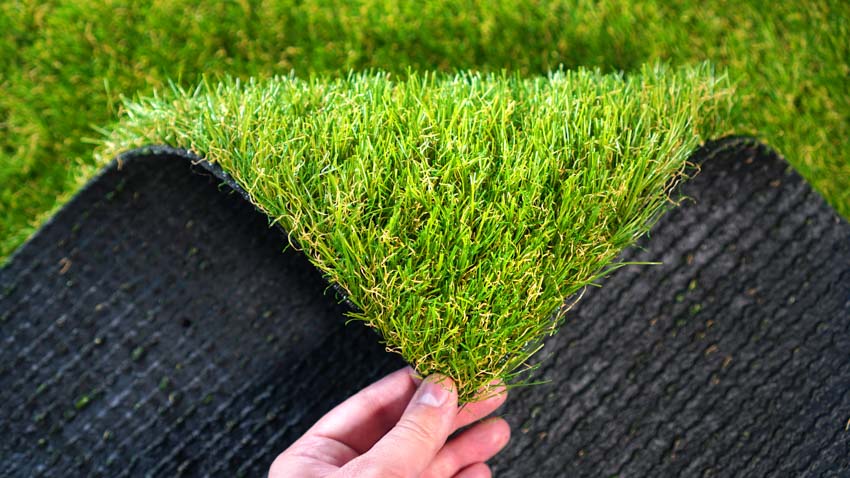
Temperature: Sometimes artificial turf can get hot to the touch when sitting in the sun all day long. This could become uncomfortable for the dog (and you) to walk on.
Smell: Artificial turf needs to be cleaned, although the turf may not stain, it does not self clean. A weekly hose down is recommended when your dog is frequently relieving itself on the artificial turf.
If a quick rinse of the artificial turf does not work you can add bleach or other cleaners that can help with tricky odors.
There are a few types of high-quality artificial grass that can counteract the smell by including moisture-wicking technology as well as easy drainage for the grass. This can be an important consideration when it comes to the type and price of artificial grass.
Cost: Depending on the type of yard you decide to install an artificial turf can have considerable up-front costs. However, this can be cut down over time when you factor in the need for less maintenance and care.
Toxicity: Some fake grass products contain dangerous chemicals that can be harmful to pets. Make sure the product you buy is safe for animals and will not leach harmful by-products.
How Much Does Artificial Turf For Dogs Cost?
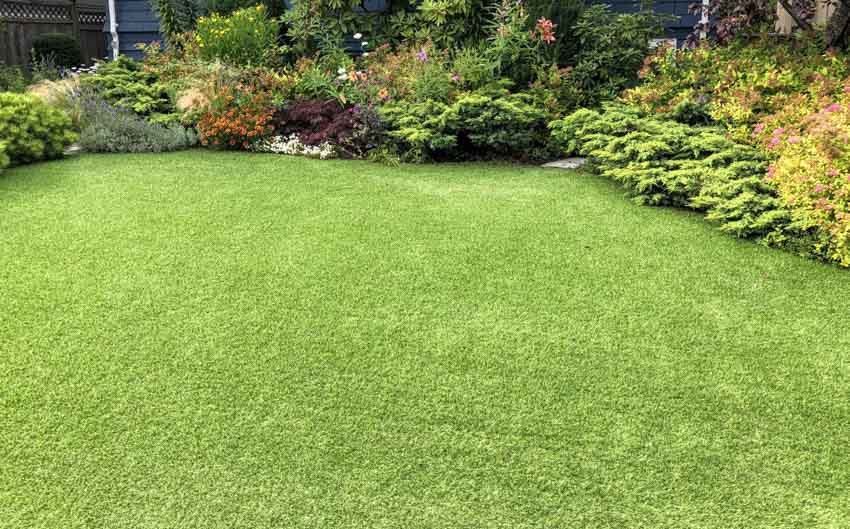
Typically, you can expect to pay about $2 to $3 per square foot for artificial turf. This can fluctuate with the different types and qualities of artificial turf that you are looking at.
Make sure you research all of the artificial turf for dogs pros and cons so you can learn what you need before you buy the cheapest one on the website.
That being said that is the price for just the turf itself, there are some other costs for different backyard essentials that will come when putting down turf. Some of these items could be base, weed killer, barriers, labor, and construction supplies.
Is Artificial Turf Good For Dogs
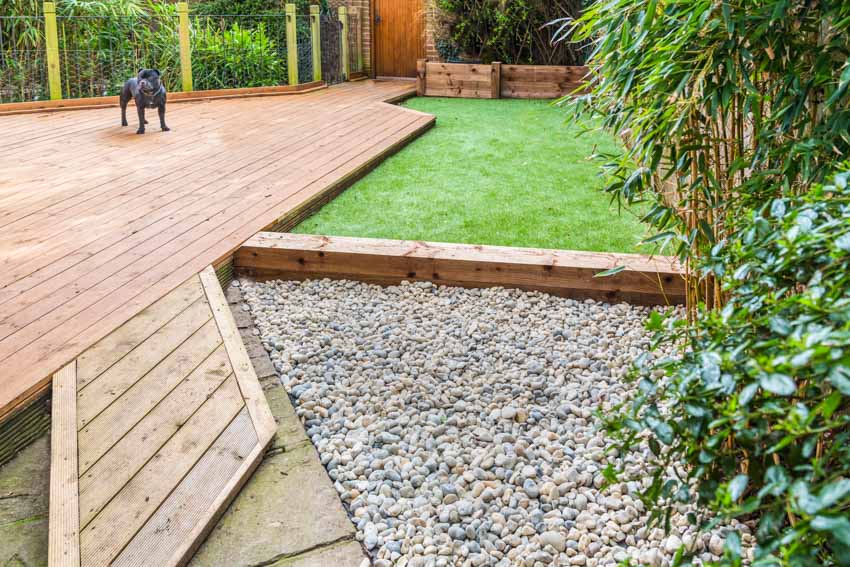
Additionally, turf is highly durable to withstand the abuse a dog could give. Overall turf is a great choice when you have dogs. You can use synthetic grass when you would normally plant real grass, or install it over a deck or patio area. Read more about artificial grass patios here.
Can Dogs Pee And Poop On Artificial Grass?
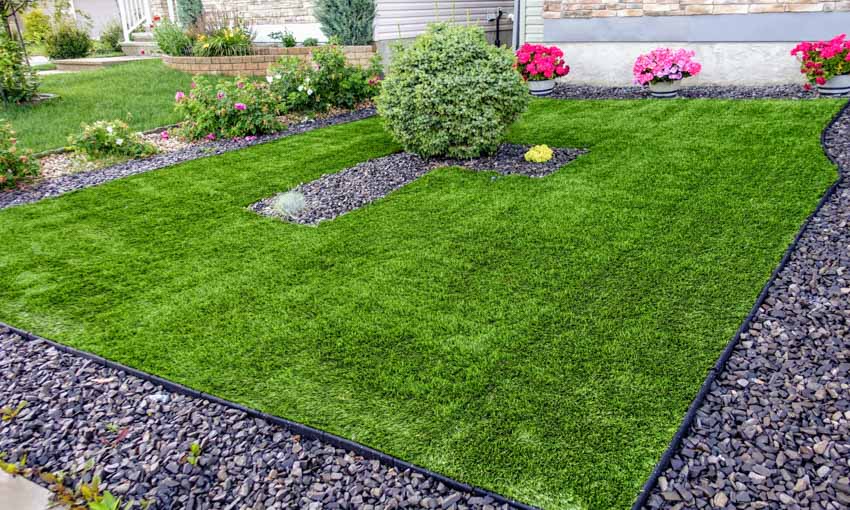
How To Install Artificial Turf For Dogs
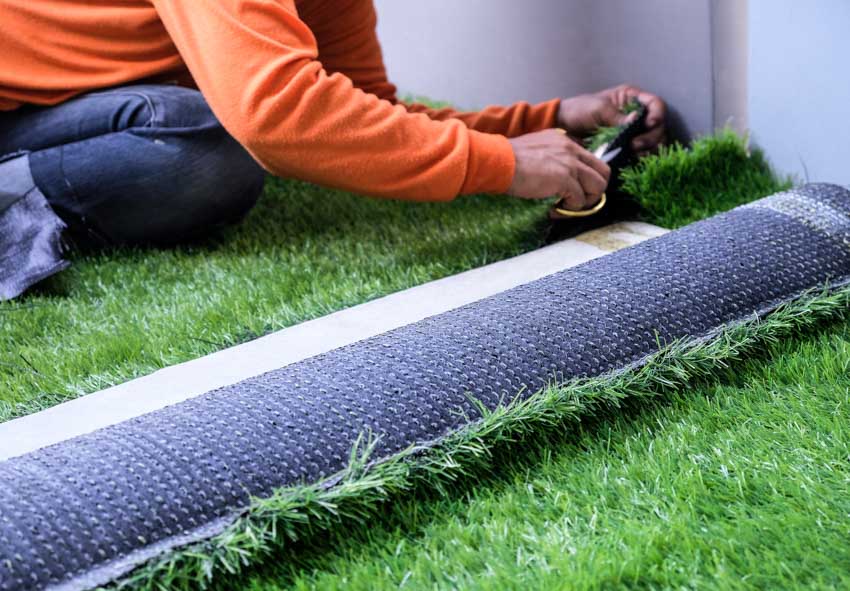
Remove grass: You will need to remove any preexisting grass, flowers, or weeds. This is best to go down typically 4 inches deep.
Prepare Base: Next you will need to add a base to the bottom of the dugout area to help with drainage and height of the artificial grass.
Lay the turf: On top of the base, you will add the turf of choice. This choice is important as there are multiple types of turf to choose from. There are pet-specific turfs that are ideal for this situation.
Cut the turf: Turf comes in long strips, so they may need to be cut to fit the specific space that you are putting them in.
Secure the perimeter: Since the artificial turf is not going to attach itself to the ground below, it needs to be secured at the ends of each strip. This is typically done with nails or staples. These should be placed every 6 inches to 1 foot around the edges and making sure to reinforce where the strip attach to each other.
Spread and brush infill: You may think that once the artificial grass is in and secured that the job is done, not quite. The final step will be to get an infill for the turf.
This is commonly sand or different kinds of crushed rubbers or silica. This needs to be done to give the turf the desired appearance and feel. The infill will need to be spread out and then brushed over to give an even spread over the entire area.
How To Clean Artificial Turf For Dogs
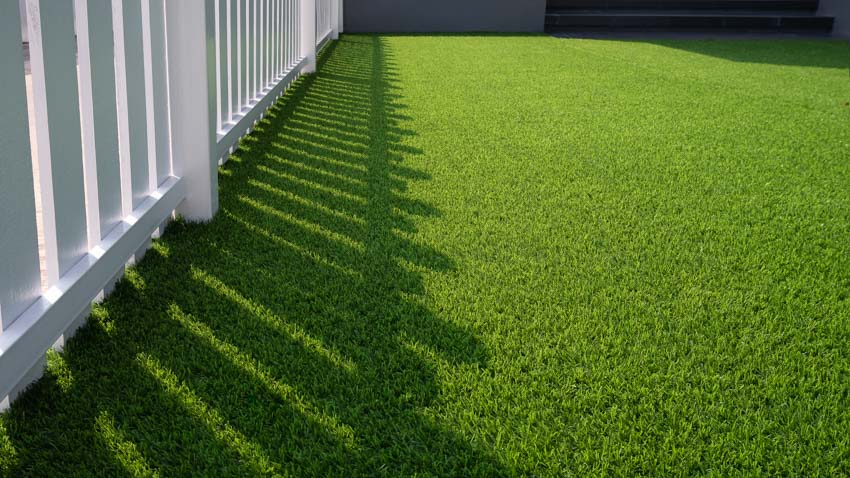
If you do not want to use the name brand soaps, a bit of bleach solution should do the trick. Since the turf is outdoors, it can air dry – if not satisfied just repeat the process.
Best Artificial Turf For Dogs
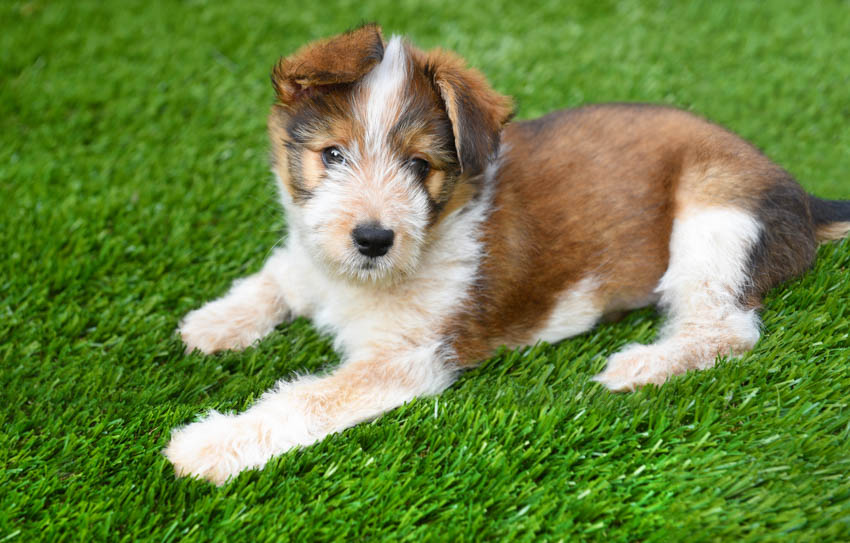
Polypropylene: Polypropylene is the lowest quality of artificial turf, it is not recommended for those who have pets using it on a regular basis. It is typically used in situations where the budget is tight and the space will remain unused or are meant for appearance versus play.
Polyethylene: Polyethylene is going to be the best artificial turf for dogs. This type of artificial grass has the most natural texture and is non-porous.
This means the dogs will feel the most comfortable in this type, and the material will not retain anything they leave out in the yard for you to find later. This material is also quite durable to withstand the foot (And paw) traffic you need.
Artificial Turf Rug For Dogs
If you do not want to spend an arm and a leg on installing artificial turf throughout the entire backyard there is a second option. There are artificial turf rugs available at a significantly lower cost.
This rug holds all the same qualities that the artificial grass does, just in a smaller setting. Dogs can be trained to relieve themselves on the grass rug to spare the rest of the yard.
See more related content in our article about artificial grass around pool on this page.


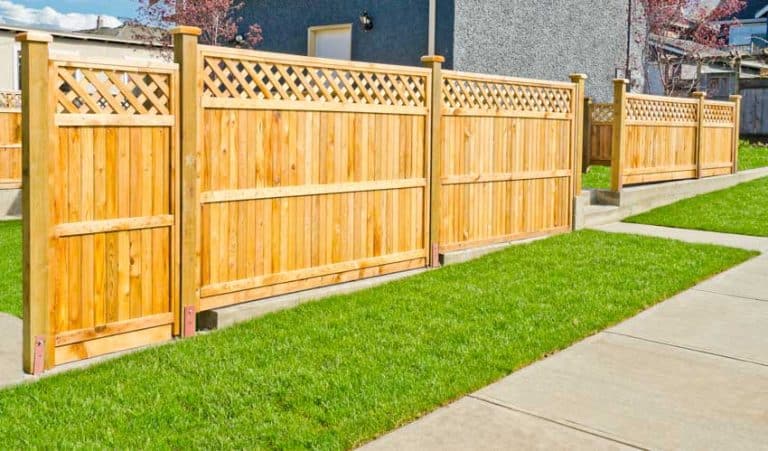

![129 Fence Designs & Ideas [Front & Backyard Styles]](https://designingidea.com/wp-content/uploads/2016/11/horizontal-wood-fence-with-wood-pergola-768x504.jpg)
